Home > Publications
Publications
Latest publications
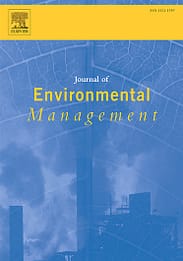
Conservation tillage-based Arundo donax agro-geotextiles enhance productivity and profitability of sloping croplands in the Indian Himalayas by reducing soil erosion and improving soil organic carbon
Very few soil erosion studies have investigated the effectiveness of conservation tillage (CT)-based agrogeotextiles (AGTs) on rainfed sloping croplands of the Indian Himalayan Region (IHR) for intensifying unremunerative double cropping (maize-wheat) to sustainable remunerative triple cropping (maize-pea-wheat). This study assessed surface runoff, soil, and nutrient losses during the rainy season in maize crops to evaluate the impact of eight conservation practices on post-rainy season soil moisture content, productivity, and profitability of the crop rotation, and soil organic carbon (SOC) accumulation over a six-year period (2017–2023) on a 4% sloped natural runoff gauge plots (100 × 20 m2 ). The conservation practices involved a combination of rainfed maize-wheat and rainfed maize-pea-wheat crop rotations, utilizing two thicknesses (5 cm and 10 cm) and two configurations (0.5 m and 1.0 m vertical intervals) of Arundo donax (AD)-agro-geotextiles (AGTs), with comparisons drawn against the standard farmers’ practice of bench terraces (BT). In the treated CT fields, the highest amounts of residues (6.0–7.1 t ha- 1 ) were recycled by applying 5 and 10 cm thick AD-AGTs at a 0.5 m vertical interval (VI). Approximately 1100–1300 mm of rainfall per hectare per year was retained as soil water, and soil erosion decreased by 80–90% in the treated AD-AGT CT fields compared to the non-treated CT fields, which experienced a loss of 8.5 tonnes per hectare per year of soil. In the AD-AGT CT fields, the highest wheat equivalent yields (12.0–13.6 t ha- 1 year- 1 ), profits (2332–2477 US$ ha- 1 year- 1 ), and SOC build-up (1.16–1.20%) were recorded. In the treated fields, an average of 32–108 kg organic carbon, 3–6 kg nitrogen, 1–3 kg of phosphorus, and 8–37 kg potassium per hectare per year were retained, preventing their loss as pollutants through surface runoff water. The research provided scientific evidence indicating that triple cropping of maize-pea-wheat in a pure rainfed condition of IHR can be achieved without compromising wheat yields, provided that farmers apply CT-based AD-AGTs at the appropriate rate and configuration, i.e., emplacement of 5 cm thick biomass @ 1.1 t ha- 1 on a 0.5 m vertical interval. From a sustainable practice point of view, the study proposes a valorization for AD biomass that contains no economic value. Future soil and water conservation research should examine the impacts of AD-AGTs on soil and water conservation across a diverse range of rainfall and field slope conditions.
Arundo / Erosion / Soil water content / Wheat / Maize / Agricultural productivity / Conservation tillage
Record No:H053878
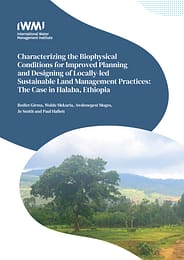
Characterizing the biophysical conditions for improved planning and designing of locally-led sustainable land management practices: the case in Halaba, Ethiopia
Spatially customized land management strategies are crucial for mitigating land degradation and fostering effective landscape restoration. A deep understanding of local biophysical conditions ensures that interventions are both contextually relevant and impactful, promoting long-term environmental sustainability and delivering socio-economic benefits to local communities. With this consideration, this report, drawing on data collected through field surveys, GIS, and remote sensing techniques, uses Halaba, Ethiopia, as a case study to highlight the region’s varied biophysical conditions and their implications for the design and planning of sustainable land management (SLM) practices. This document is intended for agricultural and natural resource management professionals involved in the design, planning, implementation, and monitoring of SLM practices.
Communities / Land restoration / Land degradation neutrality / Planning / Sustainable land management
Record No:H053824
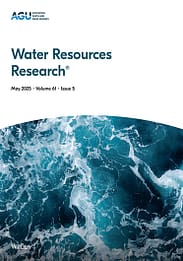
Remotely sensed high-resolution soil moisture and evapotranspiration: bridging the gap between science and society
This paper reviews the current state of high-resolution remotely sensed soil moisture (SM) and evapotranspiration (ET) products and modeling, and the coupling relationship between SM and ET. SM downscaling approaches for satellite passive microwave products leverage advances in artificial intelligence and high-resolution remote sensing using visible, near-infrared, thermal-infrared, and synthetic aperture radar sensors. Remotely sensed ET continues to advance in spatiotemporal resolutions from MODIS to ECOSTRESS to Hydrosat and beyond. These advances enable a new understanding of bio-geo-physical controls and coupled feedback mechanisms between SM and ET reflecting the land cover and land use at field scale (3–30 m, daily). Still, the state-of-the-science products have their challenges and limitations, which we detail across data, retrieval algorithms, and applications. We describe the roles of these data in advancing 10 application areas: drought assessment, food security, precision agriculture, soil salinization, wildfire modeling, dust monitoring, flood forecasting, urban water, energy, and ecosystem management, ecohydrology, and biodiversity conservation. We discuss that future scientific advancement should focus on developing open-access, high- resolution (3–30 m), sub-daily SM and ET products, enabling the evaluation of hydrological processes at finer scales and revolutionizing the societal applications in data-limited regions of the world, especially the Global South for socio-economic development.
Forecasting / Drought / Decision making / Algorithms / Modelling / Evapotranspiration / Soil water content / Remote sensing
Record No:H053823
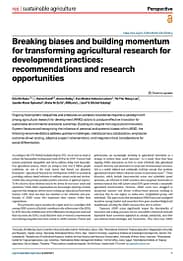
Breaking biases and building momentum for transforming agricultural research for development practices: recommendations and research opportunities
Ongoing food system inequalities and pressures on planetary boundaries requires a paradigm shift among agricultural research for development (AR4D) actors to produce effective innovation for sustainable environmental and social outcomes. Building on insights from Agricultural Innovation System literature and recognizing the influence of personal and systemic biases within AR4D, the following recommendations address upstream challenges, interdisciplinary collaboration, emphasize outcome-driven scaling, adaptive project implementation, and integrate critical considerations for social differentiation.
Empowerment / Social inclusion / Innovation scaling / Sustainable Development Goals / Agricultural innovation systems / Agricultural research for development
Record No:H053821
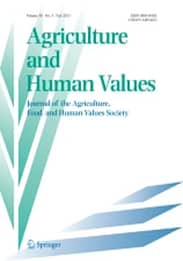
A multi-dimensional framework for responsible and socially inclusive digital innovation in food, water, and land systems
Digital innovations can offer solutions to various food, water, and land systems challenges globally. However, there are concerns on the ethical and social inclusivity aspects of these innovations, particularly for marginalized groups of people in less industrialised countries. In this article, we describe the design and development of a digital inclusivity framework, which builds from a detailed synthesis of inclusivity in digital literature. Key insights from the review were collated into five dimensions: risk mitigation, accessibility, usability, benefits, and participation. These dimensions can be assessed by means of twenty-one concrete and measurable sub indicators. Our focus was to enable a more holistic approach to the usually technocentric design of digital innovations. The framework, including the associated indicators, lays the groundwork for the development of a digital inclusivity index, a tool for assessing and fostering the inclusivity of digital innovations in food, water, and land systems.
Land resources / Water systems / Food systems / Natural resources management / Frameworks / Social inclusion / Digital innovation
Record No:H053819

Changing the decision context to enable social learning for climate adaptation
1. Successful adaptation often involves changes to the decision context to enable new ways of thinking and acting on climate change. Using 16 adaptation initiatives the authors were engaged with, we analysed how and why decision contexts changed to identify ways to improve adaptation as a process of collective deliberation and social learning.
2. We used the scope of the adaptation issue and governance arrangements to classify initiatives into four types and scored changes in the decision context using three frameworks: (1) the values, rules and knowledge (VRK) perspective to identify changes to adaptation decision-making; (2) the five dimensions of futures consciousness to identify the building of adaptation capabilities and (3) the social learning cycle to reveal evidence of reflexive learning.
3. Initiatives using novel governance arrangements for discrete problems (‘problem governance’) or complex, systemic issues (‘systems governance’) scored highest for influences of VRK, futures consciousness and the social learning cycle on the decision context. Initiatives using existing management for discrete problems (‘problem management’) scored moderately for change in the decision context, while those using existing management for systemic issues (‘systems management’) scored low because change was often impeded by existing rules.
4. All three frameworks influenced decision contexts in systems governance initiatives. Problem governance initiatives revealed interactions of VRK and futures consciousness but limited influence of VRK on the social learning cycle. Scope and governance arrangements differ with the adaptation issue and initiatives adapt over time: some small-scale ones became more systemic, developed novel governance arrangements and changed the decision context.
5. Our findings do not show that some adaptation initiatives are better or more transformative than others; just that their scope and appropriate governance arrangements are different. This questions the notion that successful adaptation requires building generic transformative adaptation approaches and capabilities. There is a diversity of arrangements that work. What is important is to align the approach to the adaptation problem. We suggest two directions for improving adaptation initiatives: first, by influencing how they can shift between problem and systems focus and between standard management and novel governance, and secondly, by using methods to diagnose and direct change in the decision context.
Socioecological systems / Decision making / Frameworks / Governance / Social learning / Climate change adaptation
Record No:H053818
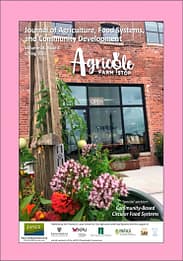
Unpacking innovation demands for climate-resilient mixed farming systems in Sub-Saharan Africa: a case of northern Ghana
According to the United Nations (n.d.), climate change is the long-term shift in temperatures and weather patterns due to natural changes, such as the sun’s activity and significant volcanic eruptions, or human activities, such as burning fossil fuels like coal, oil, and gas. The effects of and challenges caused by climate change on farmers’ ability to manage mixed farming systems in sub-Saharan Africa are well documented in the literature. However, the synergies among mixed farming systems’ components and farmers’ innovation demands and responses to climate change impacts remain fragmented. Using a case of mixed crop-livestock-tree (MCLT) systems in northern Ghana, this paper examined farmers’ responses, their innovation needs, and how these innovations can be catalyzed to enable more farmers to adopt similar climate change adaptations. Our findings show that climate change impacts mixed farming systems in several domains, with these impacts being more visible in some domains. Significant productivity declines are observed in crops, livestock, and the whole mixed farming system. Productivity declines lead to decreased incomes, food availability, and household food security. Female farmers’ access to production factors, resource management, and market participation is reduced. Farmers make technical, managerial, and business changes in response to climate change impacts. Such changes are dominated by technical changes, including using highyielding, disease-resistant, and early-maturing crop varieties, crop and animal pest and disease management, agricultural water and land management, and wind and bush fire control. Interconnections between the MCLT system components include cross-component investments, additional income generation, animal feeding and healthcare improvement, nutrition exchanges, and family nutrition improvement. These interconnections generate income and cash flow and support food and nutrition security, enabling farmers’ adaptation. Climate-resilient innovation bundles to enable farmers’ adaptation include good agricultural practices, circular farming techniques, irrigation packages, information services, and value-chain linkages. Scaling climate-resilient innovations in northern Ghana and other sub-Saharan African contexts require multiple pathways, including innovation platforms, innovation bundling, multi-actor partnerships, inclusive finance, and multistakeholder dialogues to support farmers’ adaptation to climate change.
Farmers / Livestock / Climate change adaptation / Innovation scaling / Climate resilience / Climate change impacts / Farming systems / Mixed farming
Record No:H053817
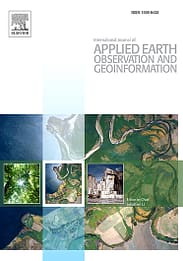
Estimating water levels in reservoirs using Sentinel-2 derived time series of surface water areas: a case study of 20 reservoirs in Burkina Faso
Reservoirs play a significant role in the mobilization of water resources in Burkina Faso, contributing to the management and availability of water for various purposes. Operational management of reservoirs requires accurate and timely water level information, which remote sensing can provide cost-effectively and with limited resources. In this study, the surface area of 20 reservoirs is first determined using a Random Forest classifier and Sentinel-2 images acquired between 2015 and 2022. The accuracy of the classified surface water areas is evaluated by calculating 5 accuracy assessment metrics. The classifications were validated using manually digitized water areas from high-resolution Google Earth images and compared to the Dynamic World (DW) land cover dataset. Afterward, the spatial variation in the areal extent of the reservoirs is analyzed over time. A linear relationship is established between the estimated surface area and the corresponding observed water level of the reservoirs. The results indicate that reservoir surface areas were accurately classified with Sentinel-2 images (Kappa above 90.35%) for all dates. Moreover, validation with high-resolution images provided an R2 of 0.99 and a Normalized Root Mean Square Error (NRMSE) of 3.53%. Smaller reservoirs exhibit significant variations in surface areas over time as compared to larger ones, which are more stable. The relationship between surface area and water level is satisfactory (R2 ranging from 0.76 to 0.97) for 14 of the 20 analyzed reservoirs. The remaining six reservoirs are affected by aquatic plant intrusion which leads to an underestimation of the surface area. The high accuracy and operational feasibility of the proposed approach demonstrate that Sentinel-2 imagery and machine learning techniques can be recommended for reservoir mapping within the framework of water level monitoring in Burkina Faso.
Case studies / Time series analysis / Satellite imagery / Surface area / Surface water / Water reservoirs / Water levels
Record No:H053816
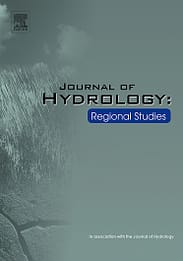
Unraveling agricultural water use in three Central Asian irrigation oases using remote sensing
Study Region: Three major irrigation oases in Uzbekistan (Bukhara, Samarkand and Kashkadarya)
Study focus: The study employs remote sensing to develop enhanced methodologies for quantifying water use in Central Asian irrigation oases from 2017 to 2022. By integrating earth observation data into a water balance approach, we quantify variables that are typically challenging to measure, such as groundwater overdraft and non-growing season water use for soil preparation. A key aspect of agricultural water management in the region is utilizing water from reservoirs. Here we introduce a novel approach that combines optical remote sensing with satellite laser altimetry to monitor the availability and use of active water storage in reservoirs.
New hydrological insights for the region: Results indicate that water from reservoir storage satisfies up to 14.9 % 2.2 % of the annual demand, but another 11.5 % 5.2 % are groundwater withdrawals. Our analysis indicates a necessary average annual reduction in groundwater extractions by at least 8.0 % 1.6 % for sustainability. Additionally, highly energy-intensive water pumping from Amu Darya River provides more than half of the water resources used in Bukhara and Kashkadarya, resulting in a significant carbon footprint of the region’s agricultural production. The detailed breakdown of water uses and irrigation water consumption by crop type informs efficient, sustainable water management, offering new opportunities for agricultural water accounting in Central Asian irrigation oases.
Remote sensing / Groundwater / Water balance / Oases / Water storage / Water demand / Integrated water resources management / Irrigation water / Agricultural water use
Record No:H053754
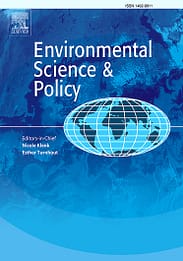
Inclusive policy development from the ground up: insights from the household water-energy-food nexus
Despite substantial contemporary research and a growing trend in exploring the water-energy-food (WEF) nexus, most research efforts have been invested in macro-level supply-side infrastructure and policies. However, prioritizing demand-side management policies can provide new opportunities and untapped potential for addressing interconnected resource challenges. Demand management inherently encompasses users’ consumption patterns, behaviors, socio-economic conditions, and choices, thereby necessitating active engagement and participation. Understanding household-level demands is fundamental to assess the demand for and consumption of water, energy, and food, as well as to inform policy decisions. In this context, our study investigated household consumption patterns within the interconnected WEF nexus, including daily practices such as cooking and washing, conservation measures, household governance, and their cross-cutting relationships with climate change. As a case study, we conducted our research in the Jabal Al Natheef neighborhood of Amman City, Jordan. Our findings reveal that households can propose and enact climate-friendly decisions. Significant gender-related differences were also observed in decisions made across WEF household practices. Additionally, households’ perspectives highlighted governance issues and revealed gaps in policy implementation along with the need for more inclusive decision-making processes. Our results underscore the importance of understanding household-level WEF nexus dynamics and daily practices in informing environmental policies, particularly those related to climate action. Such policies are best developed from the bottom-up by incorporating household insights, rather than relying solely on top-down, one-size-fits-all solutions.
Socioeconomic aspects / Gender / Climate change / Nexus approaches / Food security / Energy efficiency / Water use / Governance / Households / Policies / Inclusion
Record No:H053755
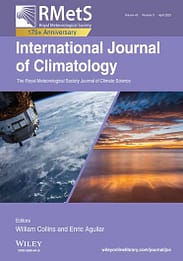
Implications of changes in water stress and precipitation extremes for cocoa production in Cte D’Ivoire and Ghana
Climate change induces high variability in drought patterns and extreme precipitation indices in rainfed cocoa farming, impacting cocoa production. This study evaluated water stress, meteorological and agricultural drought conditions, and critical extreme precipitation indices in the worldapos;s two largest cocoa-producing nations from 1981 to 2022. The results revealed a significant reduction in total annual precipitation (PRCPTOT), in the last three decades, with the greatest decline in the 1991–2000 and 2011–2022 periods. Ghana experienced the most significant reduction up to 15% (200mm/year) in the last decade, attributed to a substantial decrease in wet days number (RR1) up to 25days per year, a reduction in maximum consecutive wet days (CWD) up to 6days per year, and an increase in maximum consecutive dry days (CDD) up to 15days per year. Moreover, there was a notable decline in the Simple Daily Intensity Index (SDII), with reductions of up to 4mm/day in certain areas, contributing to increased drought frequency, severity, and duration. In the most recent decade (2011–2022), particularly during the extremely dry years of 2013 and 2015, cocoa-growing regions in Ghana (GHA) and eastern Cte dapos;Ivoire (CIV) experienced prolonged agricultural drought expressed by soil moisture deficit, typically extending from May to September. Additionally, large portions of central and eastern Ghana, as well as northeastern Cte dapos;Ivoire experienced sustained water stress, with over three consecutive months of total monthly precipitation falling below 100mm, negatively impacting cocoa productivity. The decrease in the yield in the range of 2.5% to 37% was noted in the dry years and the following years, varying according to the country depending on the severity of the drought. Sensitivity analysis highlights cocoa yieldapos;s responsiveness to drought and water stress, particularly in specific years when water stress occurred, such as 1984,1985, 1989, 1995, 1999, 2000, and 2008. Considering the observed trends in precipitation patterns and their impact on cocoa production, it is crucial to acknowledge the inherent uncertainty of future precipitation patterns due to climate change. To address this challenge effectively, our study underscores the importance of identifying and closely monitoring regions currently facing water stress, as determined by precipitation and drought indicators. Over the analysed period (1981–2022), we have noted shifts in the distribution of water-stressed areas, highlighting the dynamic nature of this issue. Consequently, we advocate for a targeted approach to implement cocoa supplementary irrigation in consistently water-stressed regions.
Strategies / Yields / Soil water content / Evapotranspiration / Climate variability / Drought / Extreme weather events / Precipitation / Cocoa / Water stress / Climate change adaptation
Record No:H053744
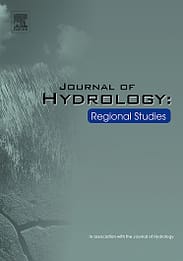
Bridging scales and borders on water availability and use in the transboundary Volta River Basin: a water accounting approach
Study region: Volta Basin
Study focus: Water management in transboundary basins is challenging due to the interaction of natural and human factors across political borders. The Volta River Basin, shared by six West African countries, exemplifies this with variable water distribution and socio-economic pressures. This study presents a comprehensive multi-scale water accounting of the basin, assessing water flows and usage at basin-wide, sub-basin, and riparian country scales from 2003 to 2021.
New hydrological insights for the region: The results reveal average basin closure is 55 % with room for additional water allocation given that utilizable water in the basin is 20 km3 /year and almost 25 % of the basin’s exploitable water is non-recoverable water (wastewater). Sub-basin analysis showed variations in average annual rainfall, ranging from 940 to 1250 mm/year, and groundwater recharge rates (18–64 mm/year), with southern sub-basins receiving more rainfall and having higher recharge rates. Similarly at the country level, variability in rainfall (630–1220 mm/ year) and recharge rates (20–280 mm/year) were noted, with downstream countries benefiting from higher rainfall and significant inflows from upstream countries. The analysis underscored the interconnectedness of water use across the basin’s riparian countries. The study’s findings give insights for the strategic management of water resources and the crucial need for enhanced cooperation among riparian countries to address shared challenges and opportunities in the Volta Basin.
Evapotranspiration / Rainfall / Water resources / Water allocation / Water management / International cooperation / Riparian zones / River basins / Transboundary waters / Water accounting / Water use / Water availability
Record No:H053743
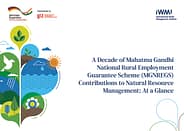
A decade of Mahatma Gandhi National Rural Employment Guarantee Scheme (MGNREGS) contributions to natural resource management: at a glance
Expenditure / Reclamation / Aquaculture / Groundwater recharge / Irrigation efficiency / Irrigation development / Disaster preparedness / Watershed management / Water conservation / Soil conservation / Rural areas / Natural resources management
Record No:H053742
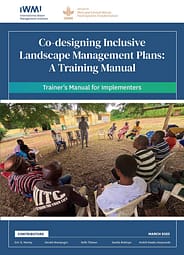
Co-designing inclusive landscape management plans: a training manual
Training materials / Monitoring / Stakeholders / Social inclusion / Gender equality / Planning / Landscape
Record No:H053741
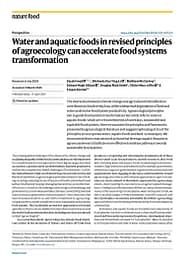
Water and aquatic foods in revised principles of agroecology can accelerate food systems transformation
The interaction between climate change and agricultural intensification contributes to biodiversity loss, while widespread degradation of land and water undermine food system productivity. Agroecological principles aim to guide food systems transformation but rarely refer to water or aquatic foods, which are critical elements of nutritious, sustainable and equitable food systems. Here we examine the principles and frameworks presented in agroecological literature and suggest rephrasing of six of the principles to incorporate water, aquatic foods and land- to seascapes. We recommend three cross-sectoral actions that leverage aquatic features in agroecosystems to facilitate more effective transition pathways towards sustainable food systems.
Sustainability / Frameworks / Transformation / Food systems / Agroecology / Water management / Aquatic foods
Record No:H053740
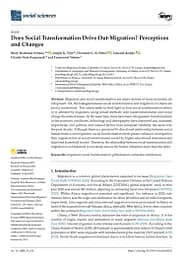
Does social transformation drive out-migration? Perceptions and changes
Migration and social transformation are major drivers of socio-economic development. Yet, the linkages between social transformation and migration in Ghana are poorly understood. This article seeks to shed light on how social transformation affects or is affected by migration, using mixed methods with transformationalist and social change theoretical lenses. At the same time, there have been retrogressive transformations in the economic conditions, technology and demography have improved and increased, respectively, and political and cultural factors have remained relatively the same over the past decade. Although there is a perceived bi-directional relationship between social transformation and migration, social transformation exerts greater influence on migration than migration has on social transformation except for higher educational attainment and improved household income. Therefore, the relationship between social transformation and migration is not balanced in our study area as the former influences more than the latter.
Socioeconomic aspects / Households / Remittances / Social networks / Globalization / Social change / Migration
Record No:H053739
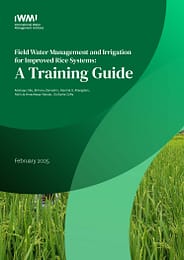
Field water management and irrigation for improved rice systems: a training guide
This publication is designed to facilitate training in irrigation and water management of an irrigated rice field. It is to be used for the Training of Trainers (ToT). The information contained in the publication requires foundational knowledge of rice production, agricultural management, and irrigation practices. This training guide has five sections of relevant information to help you understand optimum water management to achieve higher rice productivity.
Training materials / Food security / Participatory management / Water quality / Field preparation / Irrigation methods / Irrigated rice / Irrigation management / Agricultural water management
Record No:H053737
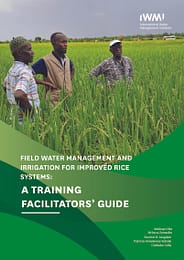
Field water management and irrigation for improved rice systems: a training facilitators' guide
Training materials / Food security / Participatory management / Water quality / Field preparation / Irrigation methods / Irrigated rice / Irrigation management / Agricultural water management
Record No:H053738
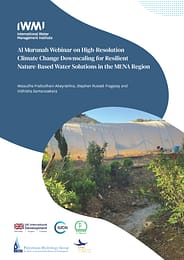
Al Murunah Webinar on High-Resolution Climate Change Downscaling for Resilient Nature-Based Water Solutions in the MENA Region
The Al Murunah project seeks to improve water security in Egypt, Jordan, Lebanon, and the Occupied Palestinian Territories (OPT) by integrating nature-based solutions for water and agricultural water management strategies (Resilient Nature-Based Water Solutions, RNBWS). The “High-Resolution Climate Change Downscaling for Resilient Nature-Based Water Solutions in the MENA Region” webinar showcased the Al Murunah Project’s groundbreaking findings and insights that can shape the future of sustainable water management in the region.
The webinar’s aims were to: 1) disseminate technical findings from high-resolution, bias-corrected climate change downscaling activities (full report and data available here) and 2) describe how they are being used in the Al Murunah pilot projects and can be used more widely. It focused on how data-driven insights are informing the planning and implementation of resilient nature-based water solutions (RNBWS) demonstration projects in the four pilot basins of Abu Al-Matamir (Egypt), Wadi Seer (Jordan), Ras Baalbeck Basin (Lebanon) and Wadi Al-Faria’a (OPT).
The webinar highlighted the need for localized, high-resolution (temporal and spatial) climate data to address the MENA region’s unique challenges. The study data is instrumental not only for sustainable water management but also for driving broader climate resilience initiatives rooted in community engagement. A key highlight of the webinar was the presentation of the Bias-Corrected Statistical Disaggregation (BCSD) method, a cutting-edge approach for generating precise and more accurate climate projections. The model outputs explain the rising intensity of extreme weather events such as heatwaves and droughts, underscore the need for proactive planning and interventions.
The importance of partnerships in turning these findings into actionable solutions was also underscored. Local communities play a central role in the project, with their insights ensuring that interventions are context-specific and sustainable, while gender inclusion and diverse stakeholder consultations are critical for equitable outcomes, particularly in addressing the needs of vulnerable populations.
Climatic data / Climate resilience / Water security / Water management / Nature-based solutions / Climate change
Record No:H053735
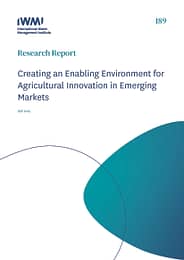
Creating an enabling environment for agricultural innovation in emerging markets
Market is the structure for the development and delivery of innovations that are able to address environmental, societal, and economic challenges. The lack of enabling conditions for market development has resulted in low investment levels and economic stagnation, impacting livelihoods in Africa. Although there have been efforts to implement market-driven reforms, challenges such as inadequate policies, weak legal frameworks, transparency issues and bureaucratic inefficiencies pose significant risks for public and private investments and for their potential to reach the target beneficiaries. This situation also discourages development partners and businesses from investing in the region.Technical assistance is crucial to improve the investment climate. This paper presents a framework to help governments create a more conducive environment for agricultural market development and the private sector to navigate through the existing challenges. Traditional technical assistance practices have faced criticism for adopting a one-size-fits-all approach that overlooks local contexts. Recently, however, there has been a shift towards more context-based and adaptive assistance, which informs this framework. This framework emphasizes key elements that contribute to an enabling environment, including institutions, such as policies, regulations, and legal frameworks, as well as clear market and regulatory information that help reduce transaction costs. The framework is theoretically based on new institutional economics and political economy approaches. It focuses on assistance in three areas with three categories of delivery partners: policy support to governments, institutional capacity strengthening (especially of National Agricultural Research and Extension Systems) and (agri)business acceleration support to small- and medium-scale enterprises. Through such assistance, this framework seeks to help create an enabling environment for the delivery of innovations that offer solutions to emerging climate, societal and economic crises. These solutions, especially those developed and scaled by the private sector, are targeted toward recipients such as farmers (including women and the youth), marginalized groups, displaced communities, refugees and migrants. The framework utilizes value chain and market development as the primary delivery structures. This framework has guided several recent enabling environment assistance practices under CGIAR’s International Water Management Institute (IWMI). This paper explores these practices and positions CGIAR as a strong technical assistance partner. While this framework offers a systematic approach to analyzing the enabling environment, the technical assistance driven by this framework promotes collaboration and co-creation. It actively engages governments, national research and extension offices, farmers and other stakeholders in influencing policies and business transaction advisories that directly benefit them. Furthermor
Poverty alleviation / Food security / Capacity development / Stakeholders / Youth / Women / Farmers / Livelihoods / Governance / Institutional reform / Investment / Climate-smart agriculture / Inclusive growth / Value chains / Small and medium enterprises / Agribusiness / Private sector / Regulations / Policies / Government / Development aid / Technical aid / Frameworks / Markets / Agricultural innovation
Record No:H053736
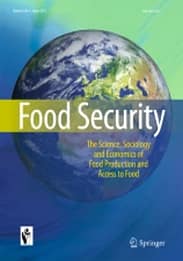
On the feasibility of an agricultural revolution: Sri Lanka’s ban of chemical fertilizers in 2021
Sri Lanka Government’s ambitious decision to ban synthetic agrochemicals, including chemical fertilizers (and pesticides), in April 2021 made it the first nation in the world to embark on a full-scale transition to – as the Government called it—organic farming, and address concerns about human health and the environment. Previous policies had envisioned a gradual shift, but the sudden ban caught agriculture off guard. Declining foreign exchange reserves to import chemical fertilizers and coinciding peak fertilizer prices appeared to support the timing of the move. However, the ensuing rush for organic fertilizers failed to meet the national demand, resulting in severe losses in rice and export-oriented plantation crops. Facing decreasing yields and food insecurity, the government lifted the ban in November 2021. The events raised critical questions about the necessity and feasibility of such a drastic transition and alternative ways. To explore the general feasibility of transitioning toward organic fertilizers, this study considered the actual and potential availability of biomass to “replace” chemical fertilizers at the national scale as was envisioned by the Government. The analysis focused on the four main national crops and showed that in none of the selected scenarios, Sri Lanka’s actual and potentially available organic fertilizer could supply rice- and plantation-based agrosystems with sufficient nitrogen, not to mention other crops or nutrients. The Government will in every scenario, including one that assumes a stepwise transition, remain compelled to spend significantly on importing organic fertilizer to maintain the required crop yields, which would cost the Government more foreign currency than purchasing chemical fertilizer. Even more costly is purchasing rice to close the national production gap, as Sri Lanka eventually did at the end of its nationwide experiment, which resulted in major food security concerns.
Policies / Human health / Pesticides / Biomass / Composts / Organic agriculture / Coconuts / Tea / Rice / Agricultural sector / Inorganic fertilizers / Agrochemicals / Organic fertilizers
Record No:H053704
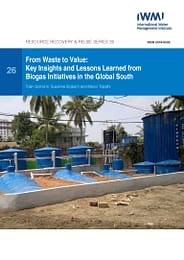
From waste to value: key insights and lessons learned from biogas initiatives in the Global South
Biogas technology offers a promising pathway for circular bioeconomy transitions in the Global South by turning organic waste into clean energy and nutrient-rich byproducts. Through anaerobic digestion, this approach supports climate mitigation, reduces environmental pollution, and enhances energy access and rural livelihoods. However, large-scale implementation remains limited due to complex barriers spanning political, financial, social, and technical dimensions. Drawing on case studies from Asia and Africa, this report identifies key drivers of successful biogas programs—including strong policy support, financing mechanisms, market development, and community engagement—while underscoring challenges such as fragmented governance, high upfront costs, and low public acceptance. Overcoming these requires integrated strategies that promote enabling environments, capacity building, standardization, and investment readiness. Scaling biogas technologies in low- and middle-income countries can catalyze sustainable development by aligning climate action with inclusive waste management and renewable energy.
Global South / Socioeconomic aspects / Awareness-raising / Capacity development / Community involvement / Innovation / Legal frameworks / Partnerships / Governance / Investment / Fiscal policies / Incentives / Financial analysis / Supply chains / Markets / Circular bioeconomy / Climate change mitigation / Greenhouse gases / Renewable energy / Strategies / Barriers / Regulations / Standardization / Guidelines / Technology / Biogas / Waste management / Reuse / Resource management / Resource recovery
Record No:H053703
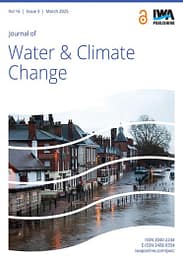
Cereal yield and water requirements in response to irrigation and soil fertility management in a changing climate: a case of Tulsipur, western Nepal
Climate change is projected to notably impact water requirements and crop yield; therefore, it is imperative to quantify climate risk and devise climate-resilient field management practices. This study applied the AquaCrop model to Tulsipur, a sub-metropolitan city located in Western Nepal. The model was calibrated and validated on a field scale, and various scenarios were analysed for baseline (2010–2020) and future (2021–2100) periods to formulate workable management strategies for irrigation and fertilizer applications. Results showed that a deficit irrigation strategy could lead to 81% fewer requirements for irrigation in rice and 24% in wheat at the cost of a minimal (~1%) reduction in yield. Water requirement is projected to decrease and crop yield to increase for both crops for all future scenarios, except wheat water requirement, where water requirement is projected to increase by up to 13% in the future. Rainfed irrigation leads to extremely high variance in crop yields. Deficit irrigation under the nationally recommended fertilizer dose is recommended as a better option to develop climate resiliency in cereal yield in the study area.
Climate prediction / Climate models / Climate resilience / Climate change / Soil fertility / Irrigation management / Water requirements / Crop yield
Record No:H053701
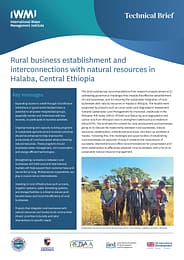
Rural business establishment and interconnections with natural resources in Halaba, Central Ethiopia
This brief outlines key recommendations from research projects aimed at (i) addressing governance challenges that impede the effective establishment of rural businesses, and (ii) ensuring the sustainable integration of rural businesses with natural resources in Halaba in Ethiopia. The studies were supported by projects such as Local-Level Land Degradation Assessment Towards Sustainable Land Management for Improved Livelihoods in the Ethiopian Rift Valley (SMILE-REDAA) and Reducing land degradation and carbon loss from Ethiopia’s soils to strengthen livelihoods and resilience (RALENTIR). The brief sets the context for rural employment and businesses, going on to discuss the relationship between rural businesses, natural resources, stakeholders, institutional structures, and start-up activities in Halaba. Following this, the challenges and opportunities of establishing rural businesses are explored. Finally, it presents the implications of successful interventions and offers recommendations for policymakers and other stakeholders to effectively establish rural businesses, with a focus on sustainable natural resource management.
Rural areas / Stakeholders / Livelihoods / Land degradation / Local communities / Infrastructure / Soil conservation / Water management / Sustainable agriculture / Capacity development / Women / Microfinance / Natural resources
Record No:H053681
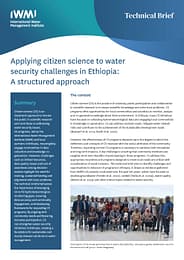
Applying citizen science to water security challenges in Ethiopia: a structured approach
Citizen science (CS) is an important approach to involve the public in scientific research and contribute to addressing water security issues. CS programs, led by the International Water Management Institute (IWMI) and local partners in Ethiopia, meaningfully engage communities in data collection and knowledge co-generation. However, challenges such as limited resources, data quality issues and lack of awareness among decision-makers highlight the need for training, sustained funding and alignment with local problems. The technical brief emphasizes the importance of leveraging CS to fill hydrometeorological monitoring gaps, ensuring data accuracy and community engagement, and developing frameworks for expanding CS programs. By aligning with community needs and fostering inclusive participation, CS can strengthen water security initiatives in Ethiopia, creating a foundation for sustainable and locally relevant solutions to water management.
Rainfall / Water quality / Shallow water / Groundwater / Sustainable development / Collaboration / Public participation / Monitoring / Hydrometeorology / Communities / Research / Water security / Citizen science
Record No:H053542
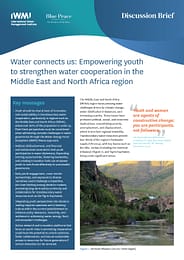
Water connects us: empowering youth to strengthen water cooperation in the Middle East and North Africa Region
Stakeholders / Sustainable development / Decision making / Political aspects / Nexus approaches / Water governance / Conflicts / International cooperation / International waters / Transboundary waters / Youth / Empowerment
Record No:H053683
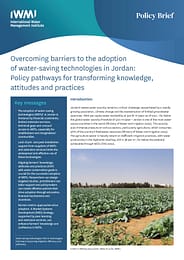
Overcoming barriers to the adoption of water-saving technologies in Jordan: policy pathways for transforming knowledge, attitudes and practices
Jordan faces severe water scarcity, worsened by rapid population growth, climate change, and overuse of limited groundwater. With per capita water availability at just 61 m³/year—well below the global threshold of 500 m³/year—Jordan is one of the most water-scarce countries. Agriculture, which consumes 48% of the countryapos;s freshwater, is particularly affected. The sector relies on inefficient irrigation, leading to low water productivity, especially in the highlands, where productivity is only JOD 0.36 per m³, much lower than the potential achievable with Water Saving Technologies (WSTs).Several challenges hinder the adoption of WSTs, including financial constraints, limited extension services, technical gaps, and unequal access, particularly for smallholders and marginalized communities. The lack of pre- and post-installation support from WST suppliers and extension services limits the effectiveness of these technologies. Without adequate guidance, many farmers struggle to integrate them into their farming practices, preventing full utilization. Therefore, aligning farmers’ knowledge, attitudes, and practices (KAP) with water conservation goals is essential for the successful adoption of WSTs. To address these challenges, research and tailored support are crucial. Researchers can identify obstacles to WST adoption, while practitioners can offer targeted support to overcome these issues. Policymakers can create policies that encourage WST adoption through financial incentives, education, and research. Education and awareness campaigns can help farmers understand the benefits of WSTs, while financial mechanisms, like subsidies or low-interest loans, can make these technologies more accessible.A farmer-centric approach is key to driving adoption. A Market Systems Development (MSD) strategy, which improves the entire market system surrounding WSTs, can promote wider adoption. Peer learning, where farmers share experiences and knowledge, can boost confidence in these technologies. Extension services play an important role by providing ongoing support and helping farmers adapt technologies to their needs. In conclusion, overcoming barriers to WST adoption and aligning farmers’ practices with water conservation goals is crucial for Jordan’s agricultural sustainability. With targeted education, financial support, and strong extension services, Jordan can ensure long-term water security and agricultural productivity.
Smallholders / Irrigation systems / Water resources / Sustainability / Decision making / Trickle irrigation / Agricultural productivity / Water scarcity / Policies / Transformation / Technology / Water conservation
Record No:H053682
![Empowering change: trained development practitioners’ attitudes toward integrating social transformation analysis in planning. [Policy Brief of the Resilience Against Climate Change - Social Transformation Research and Policy Advocacy (REACH-STR) project] (04/01/2025) Empowering change: trained development practitioners’ attitudes toward integrating social transformation analysis in planning. [Policy Brief of the Resilience Against Climate Change - Social Transformation Research and Policy Advocacy (REACH-STR) project] (04/01/2025)](https://mlpyskbirng6.i.optimole.com/cb:8GyQ.e272/w:184/h:261/q:mauto/sm:0/https://www.iwmi.org/images/publications-thumbnails/H053526.jpg)
Empowering change: trained development practitioners’ attitudes toward integrating social transformation analysis in planning. [Policy Brief of the Resilience Against Climate Change - Social Transformation Research and Policy Advocacy (REACH-STR) project]
Savannahs / Knowledge sharing / Political aspects / Policies / Communities / Economic growth / Climate change / Development plans / Analysis / Transformation / Attitudes / Empowerment
Record No:H053526
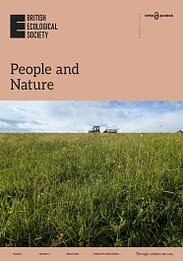
System understanding and stakeholder analyses for the vulnerability of small-scale agricultural producers in the Awash River Basin, Ethiopia
1. As climate change impacts intensify, water-related problems and the vulnerability of small-scale agricultural producers are expected to increase, suggesting the need for an inclusive and integrated management of water resources. This requires understanding the system and mapping the stakeholders, among other things.
2. This study was conducted in the Borkena and Mille catchments of the Awash River basin, Ethiopia. It aimed to improve the understanding of how to improve the effectiveness of agricultural water management practices and water resource planning to address the vulnerability of small-scale agricultural producers and draw implications for future stakeholder participation.
3. Data were collected through key informant interviews, focus group discussions, literature reviews, and observation. The Driver-Pressure-State-Impact-Response framework was used to assess the systemapos;s state and its implications for the vulnerability of small-scale agricultural producers. Stakeholder analyses involved mapping the stakeholders, examining their power and power resources, and evaluating their interest, influence, participation, trust levels, and dynamics of exclusion and empowerment.
4. The results suggested that the natural and agricultural systems in both catchments are degrading, though multiple responses are implemented regarding agricultural water management practices.
5. Diverse groups of stakeholders, such as development organizations, academic and research organizations, local administrative bodies, subregional policy and decision-makers, communities and community-based organizations, civil society organizations, donors, and nongovernmental organizations, participate in the planning, design, and implementation of agricultural water management practices.
6. The stakeholder indicated multiple strategies such as promoting community participation and participatory decision-making, aligning plans with communitiesapos; priorities and interests, improving collaboration and integration, improving access to resources, providing targeted capacity building and continuous awareness raising, and improving the implementation of policies and strategies to improve the effectiveness of interventions and address the vulnerability of small-scale agricultural producers.
7. Stakeholders have perceived strong legitimacy, but most of them have very little or no access and control over resources and connections with other stakeholder groups. Furthermore, stakeholders showed similarities in strategic options, differences in degree of influence, and demonstrated moderate to considerable trust in others. The alliance or relationship of most stakeholder groups in terms of coordinated action and coproduction using common resources was found to be weak, and most of the stakeholders lack competencies (that is, basic skills to plan, design, and implement interventions).
8. We argue that a relatively weak relationship or alliance in terms of coordinated action and co-produ
Empowerment / Strategies / Decision making / Planning / Water resources / Vulnerability / Small-scale farming / Stakeholder engagement / Agricultural water management
Record No:H053700
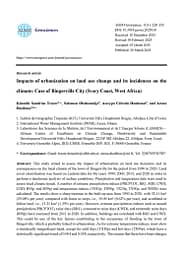
Impacts of urbanization on land use change and its incidences on the climate: case of Bingerville City (Ivory Coast, West Africa)
This study aimed to assess the impact of urbanization on land use dynamics and its consequences on the local climate of the town of Bingerville for the period from 1990 to 2020. Land cover classification was based on Landsat data for the years 1990, 2000, 2015, and 2020 in order to perform a diachronic analysis of surface conditions. Precipitation and temperature data were used to assess local climate trends. A number of extreme precipitation indices (PRCPTOT, RR1, SDII, CWD, CDD, R95p, and R99p) and temperature indices (TN10p, TN90p, TX10p, TX90p, and WSDI) were calculated. The results show a sharp increase in the built-up area from 1990 to 2020, with 32.11 km² (29.68% per year), compared with forest or crops, i.e., 19.09 km² (0.62% per year), and scrubland or fallow land, i.e., 13.21 km²(1.39% per year). However, extreme precipitation indices such as annual precipitation (PRCPTOT), rainy days (RR1), consecutive rainy days (CWD), and extremely rainy days (R99p) have increased from 2011 to 2020. In addition, buildings are correlated with RR1 and CWD. This could be one of the key factors contributing to the occurrence of flooding in the town of Bingerville, which is probably linked to urbanization. As for extreme temperature indices, most show a statistically insignificant trend, except for cold days (TX10p) and hot days (TX90p), which have a statistically significant trend of 0.004 and 0.018, respectively. This means that there have been changes in these two indices. Consecutive hot days (WSDI) and TX90p increased from 2010 to 2016, and buildings also correlated with these two indices. Consequently, changes in land use could have an influence on local temperature through the urban heat island (UHI) phenomenon. However, uncontrolled urbanization has an impact on the local climate. The town authorities need to be aware of this, and be rigorous in this area, to avoid future disasters in Bingerville.
Land cover / Rainfall / Precipitation / Temperature / Extreme weather events / Climate change / Urbanization / Land-use change
Record No:H053699

